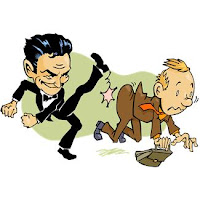 |
| Acting for camera- a fine art |
Ignorance may hurt you!
Let me give my own example when I faced the camera for the first time in 1999. It was for an episodic "AAHAT" by Mr. B.P. Singh, the great director, cinematographer and producer of "CID". I had a small role of a scientist. I had to deliver a dialogue and leave. I didn't know nor anybody told me how to take an exit. As usual, they had taken me for granted that I knew all about acting for camera. Well, I left after my dialogue, walked straight and stopped thinking that shot must be over. What followed was a silence. And then shouts! "
"
I was kicked out!
Hurt and broken I realized then the importance of learning acting for the camera and took immediate steps to know the art.
Film Vis Theater
- The major difference between acting for film and stage is the venue.
- A film presents your performance to viewers at closer range. There’s nothing “Deep” about the difference; it’s just like moving from outdoor Theater to a small room.
- In film, you are acting in front of a camera, and you need to speak in a normal voice with restrained body movements. And on stage, you are standing on a river bank talking to a group of people standing on the other side across the bank and trying to listen to you and understand your gestures. So you have to speak loudly with a bit of exaggerated gestures.
Acting for Camera
- Ask if you don't know a thing
... entry, position, blocking. Ask AD or ADP. Your mistake could be terribly embarrassing! - Always keep going until the director shouts "CUT". Continue to be in the character. There may be a retake immediately!
- Never stop either movements or dialogues when the camera is rolling
- Never look into camera lens directly unless asked to do so
- Hitting mark- you may have to walk while delivering your dialogues and reach to a mark (for the camera). Know that mark. Usually it is marked with a colored tape. Unfortunately, you cannot look at it while walking. Quickly rehearse creating intermediate "points" marks such as a table, light, chair to reach to your final point. If there are tiles on the floor, count them before you reach to your mark. The best is to count your steps as you walk normally to reach the mark
- Generally ignore the camera lens; "let it find you"
- If you cannot see the camera from your eyes (even from the corners of your eyes), your face will be hidden from the camera. Know this before making facial gestures
- In a multi camera studio or where there is more than one camera, ask for where to look. Otherwise a red light means that the camera is on. So keep a reaction on your face for that camera
- If the shot is of a group or with co-stars, ask if you are in the camera frame. If not, then relax. If in then take care of your expressions and gestures
- Manage your acting style within the camera frame as per a particular shot
- Long Shot: Large gestures (camera at a distance)
- Medium shot: Small gestures (Camera at a short distance, e.g. 10-15 feet)
- Medium close up: Normal gestures
- Real close up: Restrained gestures of facial expressions
Other important tips nobody will tell you
- Vocal intensity and impact can be created by the increasing pace (speed) at which you speak your dialogues rather than volume.
- When the camera is moving with you (tracking you) as you walk, talk fast BUT move slowly
- There is a tendency to speak loudly when you're speaking with a heavy accent e.g.
in a particular dialect (Bhojpuri, South Indian, Tapori..) - When speaking at low levels do not lose energy or reduce the pace
- Remember carefully: When you are going to be contained in more than one shot of a scene, which often happen as the same shot is usually taken from different angles or POV (Point of view) or OTS (over the shoulder), remember what you have spoken in the first shot and do not change your dialogues for the 2nd or 3rd shot. Speak exactly the same.
- You are acting for an audience of one-the other player/ players will be picked up by the camera
- Learn your lines well. While on camera your mind should not dwell on remembering lines. You have to take care of many other important things in a shot such as camera angles, movements, handling props, reacting with your co-stars etc.
- React before you speak. For example, open your mouth before saying "A"
... of a word "Aaj" of a sentence "Aj main Delhi Jaraha haun ". Or intake a breath before you speak - React with your expressions to what is going with a shot. When another actor is talking or moving or picking up something
- A camera loves eyes. Move your eyes when in a shot. They can be very effective. Move them up and down when listening to another character
Updated Post Since 2013

No comments:
Post a Comment